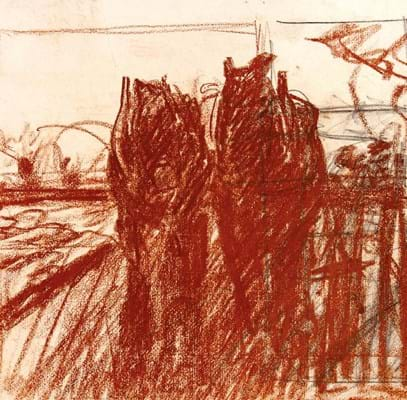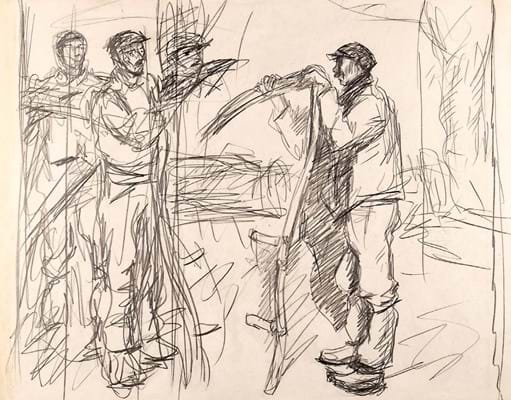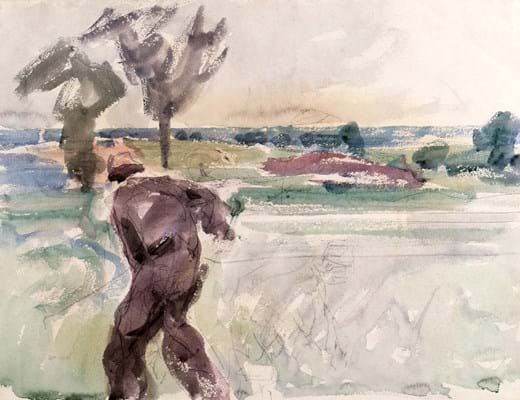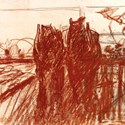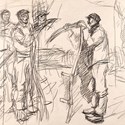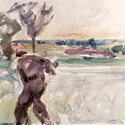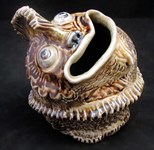Harry Becker’s (1865-1928) best remembered row was probably with the retail magnate Gordon Selfridge.
The artist, who is most familiar today for his country scenes of toiling farm labourers, spent the middle part of his career in London, where he found himself disgusted by the city’s ‘corruption’ and was frequently at odds with his patrons.
When Selfridge commissioned Becker to paint a mural for his Oxford Street department store, the two fell out over the artist’s unconcealed contempt for commercialism and the contract was withdrawn.
Thanks in part to such conflicts, Becker eventually moved to east Suffolk and there, during the last 15 years of his life, produced the intimate studies of a now-vanished way of life that continue to recommend him to collectors.
An exhibition of the artist’s drawings and watercolours runs from July 11-August 31 at Abbott and Holder in Holborn, London. It includes scenes of men loading hay onto wagons, steering teams of ploughing horses and hoeing fields.
“He came into his own when he moved to Suffolk,” says the gallery’s Philip Athill. He adds that these scenes show that Becker was not just interested in “decorative scenes, but that he dedicated his attention to the life of the small farmer in the last gasp” of traditional labouring before machines took over.
Realist taste
Originally from Colchester, Becker studied at the Royal Academy School in Antwerp where he developed a taste for the realist aesthetic used to depict human struggle.
On his return to the UK, though he did show at the Royal Academy of Arts and The Walker Gallery in Liverpool among other places, he found the process of preparing works for exhibition standard and maintaining relationships with patrons exhausting.
“The artist spent the middle part of his career in London, where he found himself disgusted by the city’s ‘corruption’
Finally, in 1913, he moved to Wenhaston, Suffolk. There, during all seasons, he rose at dawn and went out to the fields with pencil, paper and sometimes even lithographic stone to record the lives of the labourers in immediate detail.
Light touches
The paintings exist in a similar tradition popularised in the works of artists such as Arnesby Brown (1866-1955) and Edward Seago (1910-74), though their views tend to focus on the landscape alone. They were “more interested in the fall of light and the painterly aspect, less in the social aspect”, Athill says.
Today, he adds, the market for Becker remains fairly niche, though he commands up to four figures at auction with some regularity.
In November 2016, for example, a pencil drawing of Workers in the Field and a sketch of a farming scene were knocked down in a single lot for a total of £2200 at Bonhams Knightsbridge. And, at the same auction house in 2015, Becker’s Watching the Volunteers Depart took £9000, still the highest price recorded for the artist in the Art Sales Index.
The latter work was from the Loftus collection, made up of works from pieces left to Becker’s widow, and all the works at Abbott and Holder have that same provenance. The assortment of works on show range in price from £500 to more than £1200.
What makes these drawings and watercolours so appealing, Athill says, is their “fantastic vigour, particularly the freshness and strength of the drawings”.
He adds: “Becker manages to conjure up the working body very well, and for today’s audience it’s an interesting reminder of how the land was once worked.”


